Learn everything about what is pixel art, how it is used to create video games, GIFs, digital art, and top pixel art NFT projects.
The first time I saw a pixel art NFT, I couldn’t quite believe that people were spending Eth on it, but then I dug into pixel art and discovered that anyone who likes digital content has been enjoying pixel art for years! We often forget everything we read and look at on our digital screens is a combination of millions of tiny pixels – these are the building blocks of the internet and an increasing number of digital art projects.
You might remember playing video games like space invaders or an early version of Super Mario and being able to pick out every individual pixel on the screen. Although modern video games have done their best to leave pixelation in the past, digital artists are using pixels to build a retro art form known as pixel art.
In this guide, you’ll learn about the history of pixel art, how it’s used in video games, digital art, and NFTs, and discover the top pixel art-making software.
Table of Contents
The Origins Of Pixel Art
Pixel art can arguably be dated to before the rise of the digital world in mosaics from antiquity, cross stitching and ancient beadwork. However, we’ll stick to the modern form of pixel art in this guide.
The first examples of digital pixel art began to emerge in the 1930s, primarily on digital advertising boards in the cities of developed countries such as the USA. The actual utility of pixels remained relatively underappreciated for several decades despite its appearance on our streets in the first half of the 20th century, but this changed in the 70s.
Pixel Art and Video Games
Pixels got their big break in the late 1970s when the video game development industry picked up on their utility. Some of the most well-known arcade games, such as Pac-Man, Pong, and Space invaders, brought pixel gaming to the mass market.
The pixels that make up the Space Invader ships or the green pipes in Super Mario are saved as a GIF or PNG file and then organized as bitmaps that dictate their position. Developers and artists can animate a bitmap of pixels to create animations, also known as sprites.
The Nintendo Entertainment System (NES) and the Sega Master System game consoles took the 8-bit pixel game design to the next level in the 80s with games like Super Mario Bros. and Metroid.
From Video Games To Digital Art
The video game designers in the 70s and 80s relied on a limited color palette, usually an 8-bit or 16-bit system that limited the appeal of pixels to graphic designers and artists. Following the success of pixels in the gaming industry in the 80s, the improvement in 3-D graphics began to eat into the appeal of the 2-D design, but the style quickly found a new home.
The development of HD displays in the late 90s and the 21st century piqued the digital art community’s interest, who saw pixel artwork’s potential. Let’s look at two inspiring pixel artists and the digital art they’ve produced by combining single pixels.
Pixel Artists
You might think that using individual pixels as building blocks would limit your ability to develop your art style; the examples below should help you set this doubt aside.
1. Aleksey
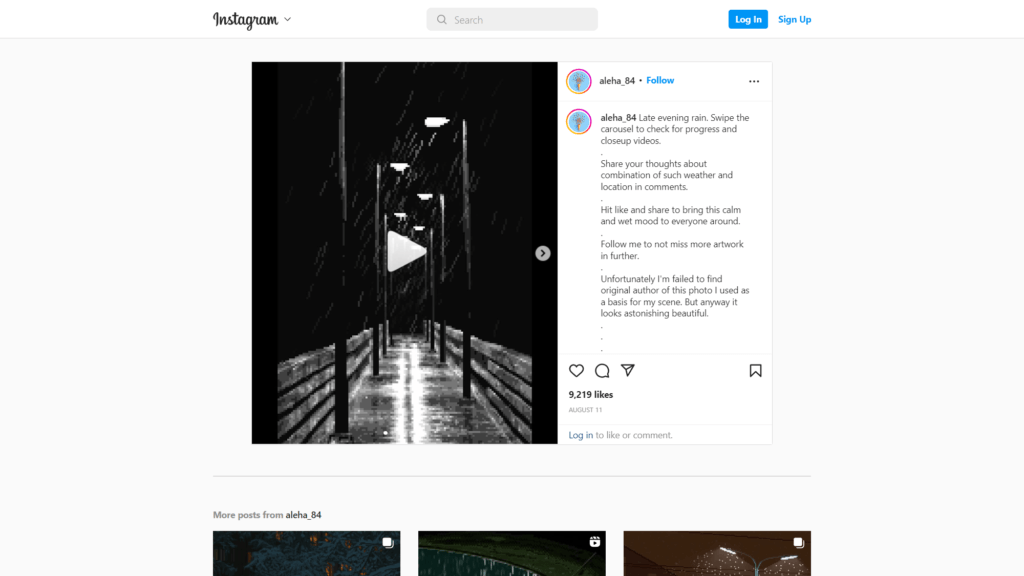
Aleksey, also known online as aleha_84, is a pixel artist and professional programmer who specializes in using pixels to recreate mundane yet eye-catching scenes. A lot of Aleksey’s pixel art style often incorporates snow and rain into dark scenes, such as a gloomy walkway or a pixelated cat sitting looking out into the night.
With over 100k followers on Instagram and over 20K on Twitter, and a solid NFT collection on Rarible and OpenSea, Aleksey shows how big the demand for pixel art has become.
2. Simon Andersen
Simon Anderson is a pixel artist and illustrator who has designed hit indie video games as the CEO of D-Pad Studio.
One of the most successful games created by Andersen is the pixel-style Owlboy. While discussing the project, he told The Guardian, “I decided I was going to use Owlboy as a way to showcase pixel art done properly.” Despite doubt around Owlboy before its launch from critics who said pixels have a limited palette and can’t compete with 3D computer graphics, the game was a success.
The game is almost entirely handmade, which is why it took nearly a decade to complete, and it successfully tells a story and builds a nostalgic gaming experience thanks to the retro pixel art style. Owlboy was released in 2016, showing the gaming and art world that designs can still turn heads despite being old-school pixel-based.
Although art is often done out of a passion for the art form and not for making money, the rise of NFTs has offered a space where digital artists can profit through working with pixels; the following section will introduce you to the most successful pixel art-based NFTs to date.
3. Toru Iwatani
Japanese game designer Toru Iwatani is the creator of Pacman. If you ever spend money in an arcade playing Pac-Man, chances are you enjoyed his pixel art! He was born in Tokyo in 1955 and spent a good chunk of his career working for game company Namco.
Top Pixel Art NFT Projects
Non-Fungible-Tokens are a recent phenomenon; just a few years ago, the average person would have never even heard the word ‘NFT.’ So, how has the near one-century-old pixel found such a lucrative position in NFTs?
It’s mainly because NFTs have allowed pixel artists to make money from their digital art. In addition, generative design software – which you can read about in our guide – makes it possible to create expansive collections of unique pixel NFTs without the hassle of building them individually. Let’s take a look at the most successful pixel art NFT projects.
1. CryptoPunks
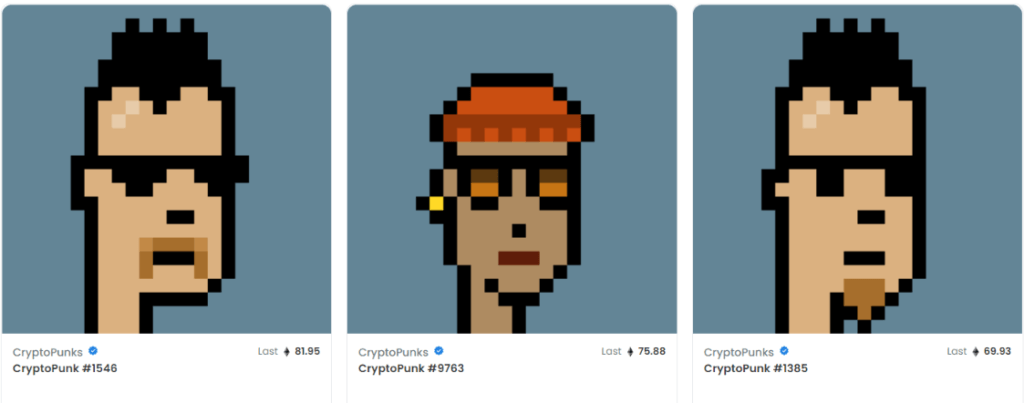
The CryptoPunks collection of 10,000 pixelated avatars is one of the most well-known NFT projects, with the Punks often selling for over $1 million and topping the charts for trading volume. Designed by Larvalabs, the Punks were the first genuinely successful Profile Picture (PFP) NFT project, and the shoulder-length characters became status symbols on social media in the crypto community.
The pixelated Punks have been purchased by celebrities such as Snoop Dogg, Jay-Z, and Steve Aoki making, and their trading volume on the secondary market rarely drops out of the top 10.
You can read all about PFP NFT projects, including CryptoPunks, in our PFP guide.
2. Meebits
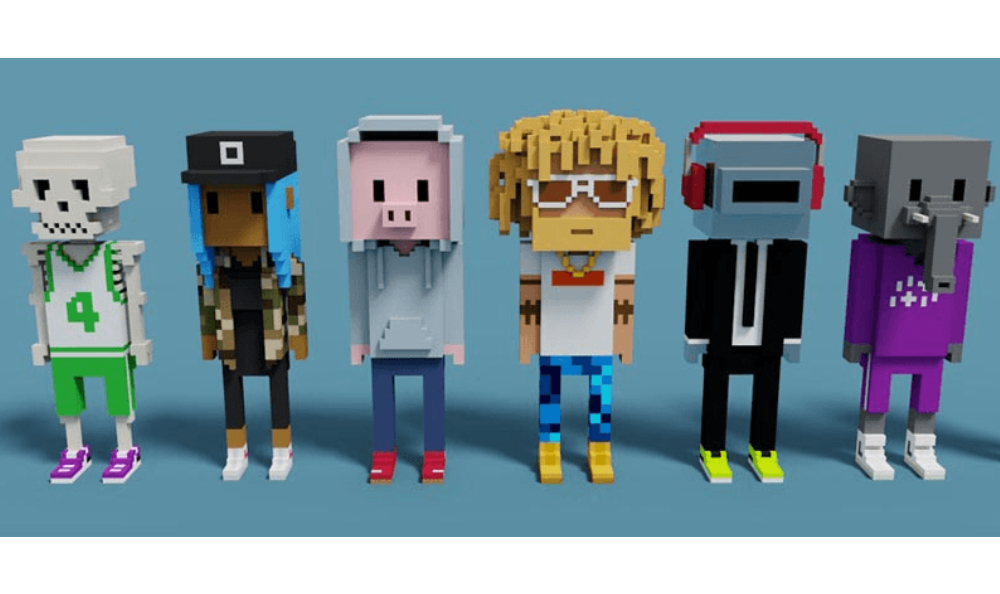
Even though the Meebits collection uses 3-D graphics to render its 20,000 avatars, the project still relies on the retro pixel style that made the CryptoPunks such a hit.
The project launched in 2021 as a PFP and metaverse project offering users high-end rendering of their avatars that will one day theoretically represent them in a virtual world. The Meebits live on the Ethereum (ETH) blockchain, and you can trade them on compatible marketplaces such as OpenSea, but bear in mind that they often sell for millions of dollars.
You can get an in-depth guide to Meebits guide.
3. ApeGang
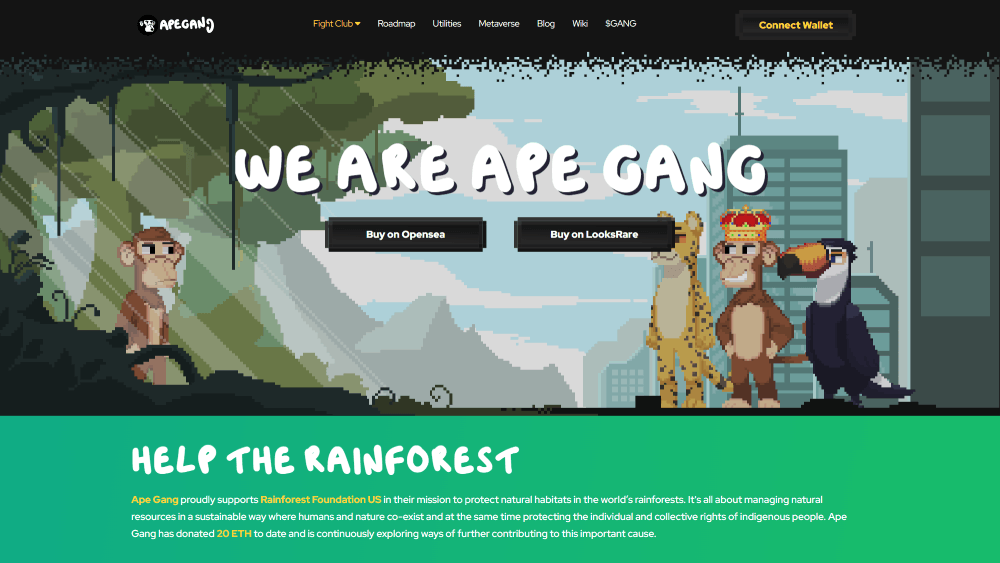
The ApeGang NFT collection comprises 10,000 pixelated apes that derive their value from the rarity of their traits.
Similar to CryptoPunks, these pixelated 2-D figures make great PFPs while it also adds value to their community by raising money for rainforest-orientated charities and the ApeGang clothing line. The ApeGang team has continued to push their pixel art style with the release of the Tucan Gang and the Jaguar Gang.
All three animals in the Gang project have a place in the Ape City metaverse, where the currency is the $GANG token. Keep an eye on the ApeGang and the Ape City metaverse to get updates on the ApeGang Medium page.
https://apegang.art/#loaded (Pic of 9 different Apes)
If the lucrative NFT projects and successful pixel artists have spiked your interest in the art form, we’ve got a list of the best software for giving it a go.
4. Anonymice
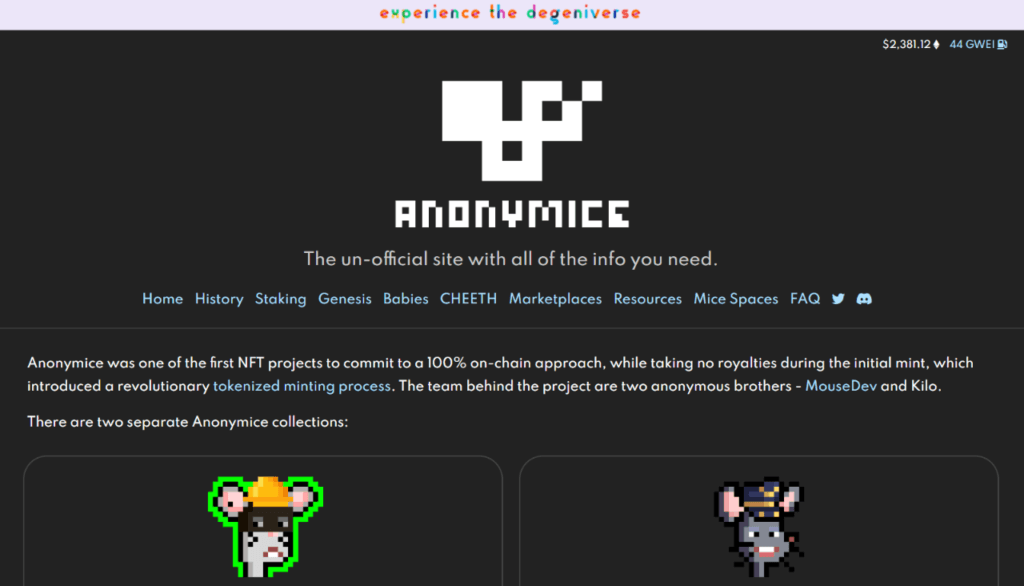
Anonymice is a picture-for-profile pixel art NFT project that exists entirely on-chain. Anonymice holders were able to breed their mice to create Anonymice babies. Anoynmice Evolution is a subsequent NFT created by the project for holders.
NFT owners can use their Anonymice to generate the proprietary token $Cheeth, which is used to claim whitelists for other NFTs. This pixel art collection is creative commons no-rights reserved, meaning they can be reused any remixed by anyone, including for commercial purposes.
How Can You Make Pixel Art?
Any software that allows you to carry our image editing on a pixel level is technically suitable for creating pixel art. The market is expansive; however, using one of the three options below is the best place to start.
Software For Making Pixel Art
1. Adobe Photoshop
When it comes to most forms of digital art and graphic design, it’s impossible to avoid mentioning Adobe Photoshop, the software is the go-to for many digital artists, and that also applies to pixel artists.
Photoshop offers a variety of appealing features such as:
- Comprehensive tool kit
- Pixelation feature that seamless pixelated images.
- Big selection of online pixel art tutorials, specifically about photoshop
- An extensive number of colors
- Anti-aliasing option
Photoshop is a complete pixel art software, but the pure depth of its features does mean it can be intimidating if you’re new to digital art.
2. GraphicsGale
GraphicsGale doesn’t offer the same depth of features that you get with Photoshop, and the software lacks the professional feel you get from Adobe, but it’s far more beginner friendly.
Pyxel Edit’s valuable features include:
- Ease of use
- All the tools you need to create your first piece of pixel art
- It’s completely free to download and use
- Solid color pallet
If you want to start creating your own pixel art without spending money or spending hours watching tutorials, then GraphicsGale is a great option.
3. MS Paint
Before social media and Steam, if you wanted to have fun on your computer, you’d boot up Microsoft Paint and start doodling. Although it might be a while since you’ve used paint, its undergone numerous updates since the early Windows software, and it’s now a top software for making pixel art.
Paint offers similar features and usability to GraphicsGale, making it good for beginners who are not ready to delve into the complex Photoshop features.
4. PiskelApp
PiskelApp is ideal for anyone looking to create sprite art by animating their pixel creations. The application is free to download and compatible with Windows, OSX, and Linux, so regardless of your operating system, you should be able to give it a whirl. Furthermore, Piskel allows you to export files as GIFS, PNGs and even az ZIP files for bigger projects.
Final Thoughts on Pixel Art NFTs
Pixels have arguably formed part of the art world since the first mosaics were pieced together, but it wasn’t until the 20th century that pixels played a bigger role in our lives through digital billboards and video games.
From 2019 onwards, pixel art secured its position in the digital art world thanks largely to NFTs and social media, while demand for the style in the video game world is returning as people seek nostalgic gaming experiences, so we can expect the pixel art trend to keep growing.
FAQs About What is Pixel Art?
What are the most popular colors to use in pixel art?
It’s hard to pinpoint the most popular color palette in pixel art; it really depends on the artists and what sort of style they’re aiming to achieve.
What is the difference between pixel art and digital art?
Digital art is classified as pixel art when it’s built using individual pixels, usually with the aid of pixel art software such as the ones we’ve mentioned in this article. Digital art is generally any form of art that’s created, traded, and stored digitally.

